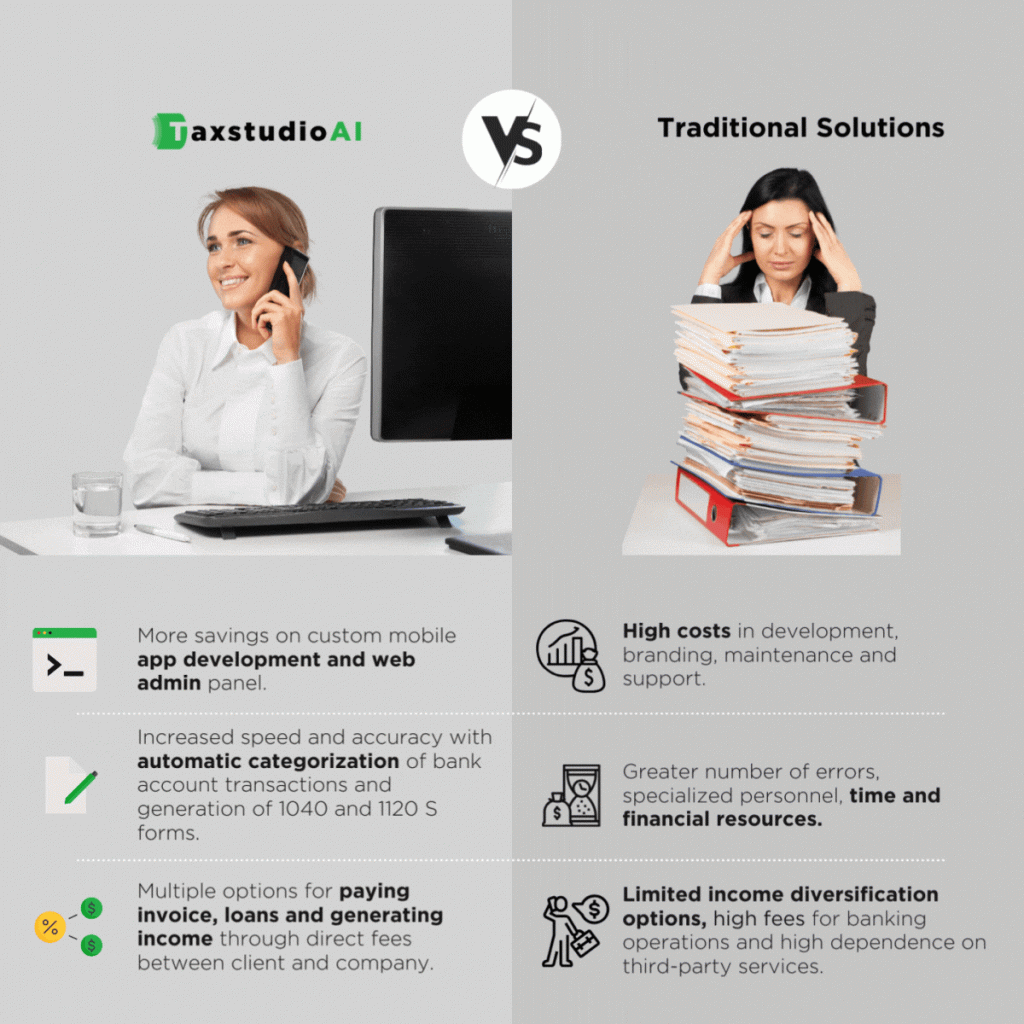A brief overview of the significance of using tax software for preparers.
Tax software has become an indispensable tool for tax preparers, revolutionizing the way they handle data, navigate complex tax codes, and interact with clients. As technology continues to advance, the use of specialized software has become crucial for staying competitive in the tax preparation industry.
The evolving landscape of tax preparation and the role of technology.
The landscape of tax preparation is continually evolving, with frequent changes to tax laws and regulations. Technology plays a pivotal role in helping preparers adapt to these changes efficiently. Modern tax software not only automates mundane tasks but also ensures compliance with the latest tax codes.
Introduction to the criteria for evaluating tax software.
When choosing tax software, preparers should consider key factors such as automation capabilities, compliance features, user interface, and scalability. This guide will delve into these criteria, providing a comprehensive evaluation to help preparers make informed decisions.
Key Features to Look for
How automation can streamline data entry and reduce manual errors.
Automation is a game-changer for tax preparers. Look for software that automates data entry, reducing the risk of manual errors and saving valuable time. Automated features can include data import, calculations, and even document organization.
Integration capabilities with other financial tools.
Choose tax software that seamlessly integrates with other financial tools. This ensures a smooth flow of information between different systems, reducing the need for manual data entry and minimizing the risk of discrepancies.
Importance of choosing software that complies with tax regulations.
Compliance is non-negotiable in tax preparation. Ensure that the software you choose complies with the latest tax regulations. This includes updates for tax code changes, security protocols, and adherence to industry standards.
Security measures to protect sensitive client information.
Security is paramount when dealing with sensitive client information. The best tax software for preparers includes robust security measures, such as encryption, multi-factor authentication, and secure data storage practices.
The impact of an intuitive interface on efficiency.
A user-friendly interface is essential for maximizing efficiency. Look for software with an intuitive design that allows preparers to navigate through features seamlessly. Customization options can further enhance the user experience, allowing preparers to tailor the interface to their preferences.
Customization options for a personalized experience.
Preparers have unique needs, and tax software should cater to those needs. Choose software that offers customization options, allowing preparers to tailor the software to their specific workflow, preferences, and the unique requirements of their clients.
How software accommodates growth and increased workload.
Scalability is crucial for growing tax preparation businesses. The best tax software should adapt to the increasing workload and expanding client base. Evaluate the scalability options offered by the software to ensure it can accommodate your business’s growth.
Scalability options for different sizes of tax preparation businesses.
Whether you are a solo practitioner or part of a large tax preparation firm, the software’s scalability should align with your business size. Some software solutions offer different plans tailored to the needs of small, medium, and large tax preparation businesses.
Comparison of Top Tax Software
Overview of features.
Intuit ProConnect Tax Online is renowned for its user-friendly interface, comprehensive features, and integration capabilities. Drake Tax excels in handling complex tax scenarios, while Thomson Reuters UltraTax CS is known for its robust functionalities and performance.
Pricing models and plans.
Intuit ProConnect Tax Online offers a tiered pricing structure, with options for different business sizes. Drake Tax and Thomson Reuters UltraTax CS also have customizable plans, allowing preparers to choose features based on their specific needs and budget.
User reviews and testimonials.
Real-world experiences from other preparers are invaluable. Explore user reviews and testimonials for each software to gain insights into the strengths and potential drawbacks of each option. Consider factors like customer support, ease of use, and overall satisfaction.
Feature highlights.
Drake Tax is praised for its powerful calculations and extensive form support. Intuit ProConnect Tax Online stands out for its cloud-based accessibility and collaboration features. Thomson Reuters UltraTax CS is known for its robust e-filing capabilities and integration with other Thomson Reuters products.
Comparisons with other software.
Consider how each software stacks up against the competition. While Intuit ProConnect Tax Online may be user-friendly, Drake Tax might be preferred for its comprehensive calculations and scenarios. Thomson Reuters UltraTax CS may stand out for its integration capabilities within the Thomson Reuters ecosystem.
Pros and cons.
Each software has its strengths and weaknesses. For example, Intuit ProConnect Tax Online is praised for its user interface but may have limitations in handling extremely complex tax scenarios. Drake Tax may excel in complexity but may have a steeper learning curve. Consider these pros and cons in light of your specific business needs.
Key functionalities.
Dive into the key functionalities of each software. Intuit ProConnect Tax Online offers time-saving automation features, Drake Tax provides in-depth reporting and scenario analysis, and Thomson Reuters UltraTax CS excels in handling a high volume of returns efficiently.
Integration capabilities.
Evaluate how well each software integrates with other tools in your tax preparation workflow. Intuit ProConnect Tax Online may seamlessly integrate with QuickBooks, while Drake Tax may have integrations with accounting and bookkeeping software. Thomson Reuters UltraTax CS may offer integration within the broader Thomson Reuters ecosystem.
Performance and user feedback.
Consider the performance of each software in real-world scenarios. Look for user feedback regarding speed, reliability, and overall satisfaction. Performance is crucial during peak tax season, and user feedback provides valuable insights into how each software performs under pressure.
How to Choose the Right Software
Identifying specific requirements for your tax preparation business.
Before diving into software options, assess the specific needs of your tax preparation business. Consider factors such as the volume of clients, the complexity of returns you handle, and any unique requirements that may influence your choice of software.
Importance of testing software through trials or demos.
Take advantage of trial periods or demos offered by software providers. This hands-on experience allows you to explore the software’s features, test its usability, and determine if it aligns with your business requirements. Look for trial periods that provide access to the full range of features.
What to look for during the trial period.
Use the trial period to evaluate critical aspects of the software. Test its automation capabilities, assess the user interface for intuitiveness, and explore how well it integrates with your existing tools. Pay attention to the level of support provided during the trial period, as it reflects the ongoing support you can expect.
Evaluating the availability and quality of customer support.
Reliable customer support is essential when using tax software. Evaluate the availability of customer support channels, such as phone, email, or chat. Additionally, consider the quality of support by reading reviews and testimonials. Responsive and knowledgeable support can make a significant difference during tax season.
Training resources provided by the software.
Look for tax software that offers comprehensive training resources. This includes tutorials, webinars, and documentation to help preparers and their staff get acquainted with the software’s features. Training resources contribute to a smoother onboarding process and ensure users can maximize the software’s capabilities.
Implementation Tips
Seamless transition of data from existing systems.
Data migration is a critical step in implementing new tax software. Ensure a seamless transition by carefully planning the migration process. Back up data from existing systems, validate the accuracy of migrated data, and have a contingency plan in case of any issues.
Common challenges and how to overcome them.
Anticipate common challenges during implementation, such as data discrepancies or staff resistance to change. Address these challenges proactively by providing adequate training, communicating the benefits of the new software, and addressing concerns promptly. A well-managed implementation process minimizes disruptions to your workflow.
Strategies for training staff on new software.
Effective training is key to successful software implementation. Develop a training plan that includes hands-on sessions, documentation, and ongoing support. Tailor the training to the roles and responsibilities of your staff, ensuring they are equipped to use the software confidently.
Best practices for a smooth onboarding process.
Smooth onboarding sets the tone for a positive experience with new software. Implement best practices such as phased rollouts, assigning dedicated onboarding support, and encouraging open communication. Regularly assess the progress of the onboarding process and address any challenges promptly.
Encouraging feedback from staff and clients.
Feedback is invaluable for continuous improvement. Encourage staff and clients to provide feedback on their experience with the new software. Use this feedback to identify areas for improvement, address any concerns, and enhance the overall user experience.
Implementing changes based on feedback for continuous improvement.
Act on the feedback received during the implementation process. Implement changes based on user input to enhance the software’s functionality, address any usability issues, and ensure an optimal experience for both preparers and clients. Continuous improvement is a key aspect of staying competitive in the tax preparation industry.
Real-life Success Stories
Challenges faced before adopting tax software.
Explore real-life success stories, starting with the challenges preparers faced before adopting tax software. Common challenges may include time-consuming manual processes, errors in data entry, and difficulties in keeping up with changing tax regulations.
Positive outcomes and improvements.
Highlight the positive outcomes and improvements experienced by preparers after implementing tax software. This could include increased efficiency, reduced error rates, and improved client satisfaction. Real-life success stories provide tangible examples of the impact of tax software on the day-to-day operations of tax preparation businesses.
Conclusion
Recap of key points.
Summarize the key points discussed throughout the guide, emphasizing the importance of choosing the right tax software for preparers. Highlight the criteria for evaluation, the features to look for, and the implementation tips provided.
Encouragement to explore the recommended tax software.
Encourage preparers to explore the recommended tax software options based on their unique business needs. Emphasize the value of investing in technology that not only meets current requirements but also adapts to future changes in the tax preparation landscape.
Final thoughts on the evolving landscape of tax preparation.
Conclude with final thoughts on the evolving landscape of tax preparation and the role of technology in shaping the future of the industry. Emphasize the importance of staying informed, embracing technological advancements, and continuously improving processes to thrive in the dynamic world of tax preparation.
Flexibility of Tax Studio AI
Discover the flexibility of Tax Studio AI. Modular, customizable, and tailored to fit your agency’s unique needs. Your tax journey, your choices! Contact Us.


